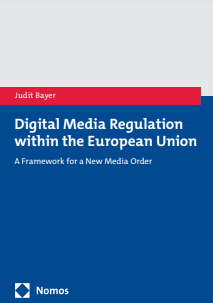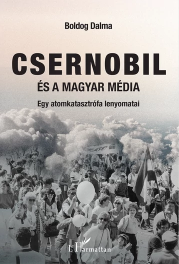Contents – Summer 2022
Bajomi-Lázár, Péter:
Bajomi-Lázár, Péter:
Smear vs. scandal: What is the difference?
Smear is often mistaken for scandal, as the two indeed share a number of similarities. Both expose alleged transgressions of social and legal norms, both are made public by the media, and both may harm one’s reputation. Smear, however, is widely seen as a malicious practice, while scandal—or, more precisely, political scandal—is generally accepted as a legitimate and necessary instance of democratic journalism. How can one tell smear from scandal, if at all? This paper attempts to delineate and to distinguish these two concepts. It argues that the former practice is an instance of lapdog journalism, whereas the latter is one of watchdog journalism.
Keywords: Hungarian media, journalism ethics, political ritual, scandal, smear
Smear vs. scandal: What is the difference?
Médiakutató Summer 2022 pp. 7-13
Szabó, Krisztián:
Szabó, Krisztián:
Data-driven visual journalism in Hungary
This paper presents the improvements of data-driven visual journalism in Hungary in the past twenty years, comparing it with international trends and tendencies. Data journalism has a three-hundred-years long history in the Anglo-American world. To date, the genre is present in the newsrooms in many countries, including in Hungary, where its practices are lagging behind those of international news sites and papers. To verify the assumption that Hungarian tendencies in data journalism are underdeveloped as opposed to international ones, this paper relies on content analysis and semi-structured interviews. The reasons for underdevelopment lie in the readers’ attitudes, the newsrooms, the Hungarian educational system, the word-centred and visually underdeveloped Hungarian mentality, the unavailability of data and the interaction of all of these aspects. In order to achieve substantial improvement in the genre, fundamental changes must be implemented in both the Hungarian data supply system and the Hungarian mentality in the forthcoming years.
Keywords: chart, data journalism, data visualisation, diagram, infographics, information graphics, news media, visuality
Data-driven visual journalism in Hungary
Médiakutató Summer 2022 pp. 15-34
Tóth, Tamás – Major, Zsolt Balázs:
Tóth, Tamás – Major, Zsolt Balázs:
Explicit and implicit populism
This paper presents content analysis methods designed to detect explicit and implicit populism. It outlines their theoretical embeddedness, practical applications, and methodological usefulness. It highlights that the above concepts consider populism a political communication style. Through the notions of explicit and implicit populism, the detection of articulated and latent dichotomies can be achieved in content analyses. This theorydriven paper also reviews relevant findings from previous empirical research and suggests ways of embedding the concepts of explicit and implicit populism in international comparative research.
Keywords: explicit populism, ideology, implicit populism, political communication, content analysis
Explicit and implicit populism
Médiakutató Summer 2022 pp. 37-46
Burai, Krisztina:
Burai, Krisztina:
(Un)following for political reasons?
The proliferation of the internet and social networking sites has created a medium that enables users to access a wide range of news sources, and the multitude of content available means that citizens are forced to choose from the content available, for which the platform in the focus of my research, Facebook, offers a number of possibilities. My research attempts to answer the question of whether users use the various functions for managing political content on Facebook, which can reinforce the homogenisation of the information. This question is explored through a survey of 1,000 people, representative of key demographics. The findings show that only a small part of users use the positive or negative newsfeed editing features regularly.
Keywords: curated flows, Facebook, social media, political communication
(Un)following for political reasons?
Médiakutató Summer 2022 pp. 49-61
Bánszki, Kristóf:
Bánszki, Kristóf:
Pussycat, Betsy the Doll, Morzsa the Dog, and Socialism
This study focuses on the formative conditions of the first Hungarian television series “What’s the New in Ground Beetle Street?” (Mi újság a Futrinka utcában?). It discusses the potential reasons for its success, and attempts to answer the questions of how the series formed the state-socialist social imagination of both children and adults and what educative impact it may have had. It suggests that the creators, while lacking any preliminary professional examples, consciously used the possibilities that the genre series offers.
Keywords: genre, Hungarian Television, remedialisation, sociological imagination, success, television series
Pussycat, Betsy the Doll, Morzsa the Dog, and Socialism
Médiakutató Summer 2022 pp. 65-78




